Essential Techniques for Laundry Stain Removal
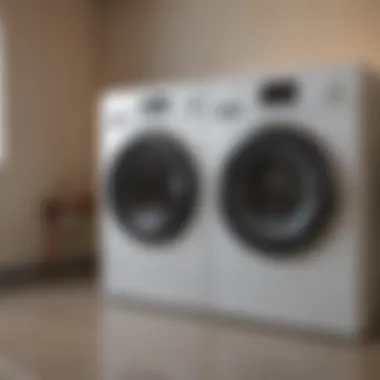
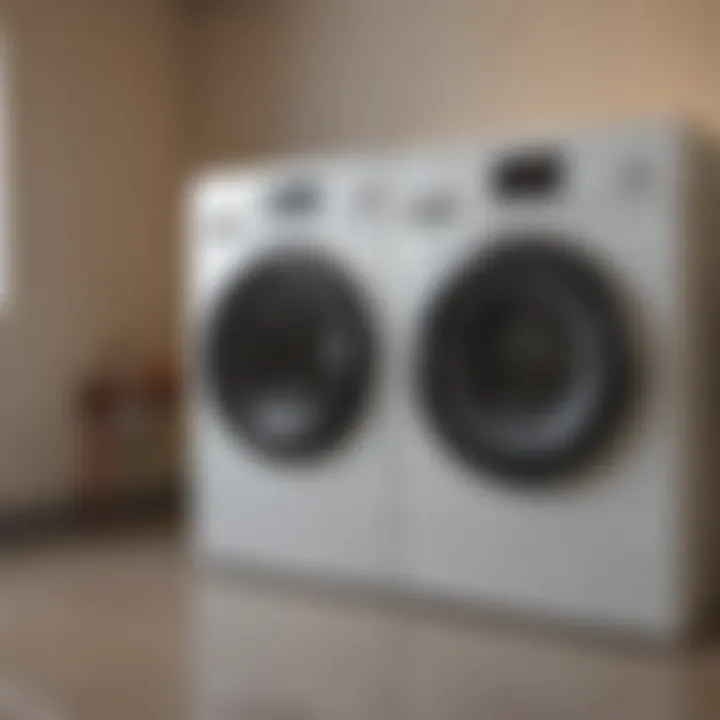
Intro
Every household faces the inevitable encounter with stains; they are a part and parcel of daily life. From a splash of red wine at dinner to grass stains from a child's playful afternoon, the battle against stains is ongoing. This guide serves as a roadmap through the maze of laundry stain removal, offering practical advice, backed by tried-and-true techniques and preventive measures. Our aim is to equip you with the knowledge to tackle those pesky marks that threaten the integrity and aesthetic of your cherished garments.
Stain removal is more than just a chore; it’s an art. Using the right methods can save your favorite clothes from being relegated to the donation pile or, even worse, the trash bin. Understanding the type of stain is pivotal. Each stain type has a specific set of effective treatments, all of which we’ll break down methodically in the coming sections. By arming yourself with this information, you can ensure that your wardrobe remains vibrant and long-lasting.
We’ll also take a look at some current trends in fabric care, including popular techniques and recommended products that make the stain removal process smoother. It's about time to turn that laundry room into a haven of cleaning prowess.
Stay tuned as we delve deeper into the nuances of stain removal with strategies that are not just effective but also considerate of the fabrics you love.
Understanding Stains and Their Formation
Stains can feel like unwelcome guests, showing up right when you least expect them and often leaving a mark long after they depart. That's why understanding stains and their formation is crucial, particularly when it comes to cleaning fabrics effectively. When you grasp how stains develop, you can devise smarter strategies for removal. This knowledge not only saves you from wasted time and effort but also helps in preserving the quality of your beloved fabrics.
Nature of Stains
Stains are essentially the result of various substances interacting with fabric. At their core, a stain can be defined as a discoloration caused by any foreign material such as liquids, solids, or even gases. Each stain begins as a seemingly harmless drop of coffee or a burst of ink, but the longer it stays, the tougher it becomes to tackle. Knowing how these substances bond with fabric fibers can make all the difference during treatment.
Common Stain Culprits
Some stains are more prevalent than others, and understanding common offenders can alert you to potential disasters before they escalate. Common culprits include:
- Food: Sauces, ketchup, and chocolate often wreak havoc during meals.
- Beverages: Coffee, wine, and juices can create dark marks that soak deep into fibers.
- Grease and Oil: Cooking oils and salad dressings can leave those pesky shiny spots.
- Ink: Pens seem to have a knack for breaking open at the worst possible moments.
By identifying these common stain sources, you're better prepared to avoid them or take immediate action when they happen.
Types of Stains
Stains generally fall into three broad types, each with its own treatment challenges.
Organic Stains
Organic stains come from living organisms or products derived from them. Common examples include food, beverages, and even bodily fluids. What sets organic stains apart is their propensity to bond quickly with fabric fibers due to their biological composition. This means, if not addressed promptly, they can easily become a permanent reminder of mishaps. Understanding how to treat organic stains is imperative because they often require specific methods to break down the biological matter effectively.
Inorganic Stains
Against the organic spectrum, inorganic stains stem from minerals, metals, or synthetic substances. Examples might include rust marks or metallic dyes. These stains can be particularly stubborn, as they often embed themselves into the fabric. One key characteristic of inorganic stains is their resistance to conventional cleaning methods, requiring specialized treatments or cleaners. A deep understanding of these types of stains can help you prepare adequately and select the right tools for removal.
Grease Stains
Grease stains are often the bane of a homemaker's existence. They originate from various sources, including food preparation and even machinery. Their main characteristic lies in their oily nature, which enables them to cling tightly to fabric fibers. Treating grease stains efficiently requires acting fast—blotting the area before the grease has a chance to set helps tremendously. Additionally, knowing which products specifically target oil can be a game-changer when it comes to successful removal.
"The sooner you tackle a stain, the better the outcome. Procrastination has never been a friend to laundry."
Essential Tools for Stain Removal
When it comes to effective stain removal, having the right tools in your arsenal makes all the difference. This section focuses on the essential tools you need to tackle stains with confidence. Equipping yourself with these items not only streamlines the cleaning process but also enhances the effectiveness of the methods you choose to implement. In stain management, preparation is key, and the right tools help you put your best foot forward when facing stubborn blemishes on your fabrics.
Stain Removal Products
Commercial Stain Removers
Commercial stain removers come in various forms, and they can be life-savers when it comes to persistent stains. These products often contain specific enzymes and chemicals designed to break down different types of stains. For instance, a product like OxiClean features oxygen bleach that lifts stains from fabrics, making it a popular choice among households.
The key characteristic of commercial stain removers is their convenience. Just apply, wait, and wash. It’s straightforward, which appeals to those pressed for time. However, these products come with their unique set of challenges. Some individuals may find them harsh, especially on sensitive fabrics. Always read the labels and consider choosing a gentle formula if needed.
One should also be aware that not all stain removers are created equal. Some may exclude certain materials from their recommended use, which could lead to damage if misapplied. This requires diligence and attention to detail, as the wrong choice can result in more harm than good.
DIY Solutions
On the other side of the spectrum are DIY solutions for stain removal. Utilizing common household items like vinegar, baking soda, and hydrogen peroxide can often be surprisingly effective. Not only are these solutions typically gentler on fabrics, but they also tend to be incredibly affordable.
The standout feature of DIY solutions lies in their accessibility. Most people already have these ingredients in their pantry, which adds an element of convenience. These methods can be customized based on the type of stain and fabric, which gives you more control over the cleaning process.
However, there's a caveat. While many DIY methods are effective, ongoing experimentation is often needed to achieve the best results. Unlike commercial products, there's no universal recipe that works every time, so be prepared for some trial and error.
Fabric Care Items
Brushes and Cloths
When it comes to the physical aspect of stain removal, brushes and cloths shouldn’t be overlooked. A good brush can penetrate the fibers and help lift dirt and grime, making it an invaluable tool in your cleaning kit. Microfiber cloths, in particular, are a favorite for many. They’re effective at trapping particles and can be used damp or dry.
The main advantage of using brushes and cloths is their versatility. You can use a specific brush for certain fabric types, ensuring a gentler touch when necessary. Furthermore, unlike chemicals, they pose no risk of discoloration.
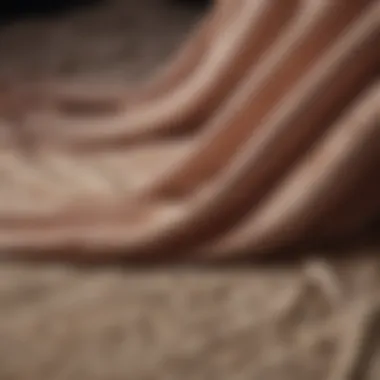
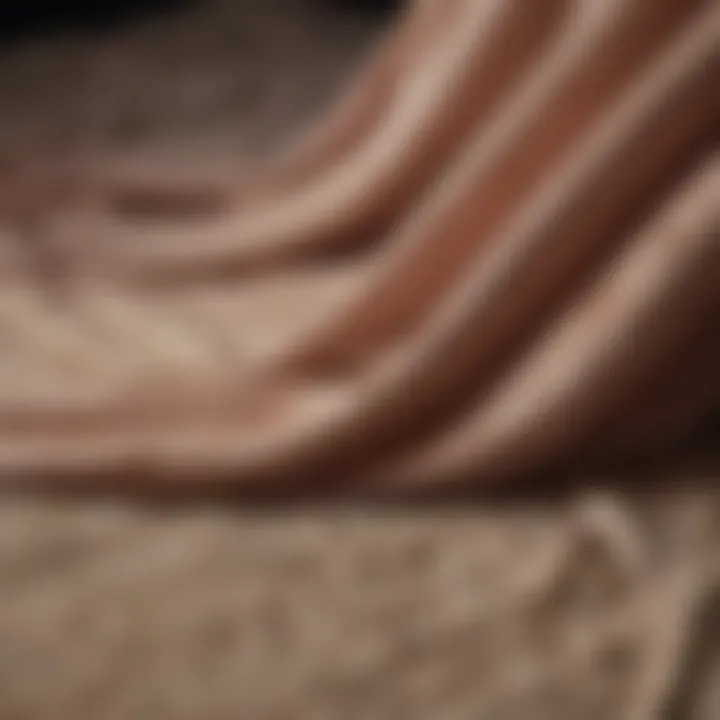
On the downside, improper use of a brush can actually set a stain deeper into the fabric, especially if you’re dealing with delicate materials. Choosing the right brush type and knowing how to use it can mitigate this risk significantly.
Spray Bottles
Spray bottles are another unsung hero in the stain removal game. They allow for targeted application of solutions, whether it’s a commercial product or a homemade mixture. Being able to control the amount of stain remover you apply can prevent oversaturation, which can sometimes worsen the situation.
A spray bottle's key characteristic is its convenience. You can mix your solution, fill up the bottle, and keep it handy for quick access. Moreover, many spray bottles come with adjustable nozzles, allowing you to switch from a fine mist to a concentrated stream as needed, which is useful based on the stain type.
However, if not maintained properly, spray bottles can become clogged or contaminated, which may affect the performance of the solution inside. Regular cleaning and inspection of the nozzle will help you ensure optimal performance when you need it most.
"The right tools not only simplify the cleaning process but also empower you to tackle stains with confidence."
Pre-Treating Stains
When it comes to laundry, addressing stains promptly is crucial. Pre-treating stains can make all the difference between a ruined garment and a perfectly cleaned one. This practice involves applying a treatment to the stained area before the actual washing process. By doing so, you allow the stain remover to penetrate and break down the stain’s composition, enhancing the chances of complete removal during washing. Moreover, pre-treating stains helps to prevent the stain from setting in, which can become a headache later on.
Immediate Care Techniques
Immediate care techniques are actions one should take as soon as a stain is spotted. The first step is to blot the stain gently with a clean, dry cloth or paper towel. This action can absorb excess liquid and prevent it from spreading further. Avoid rubbing, as this might push the stain deeper into the fabric fibers. Following this, a small amount of water can be applied; however, this depends on the type of stain. It's wise to know that some stains, particularly those from dyes or inks, may react detrimentally to water. In such cases, using a specific stain remover or a fabric-safe solution is beneficial.
Soaking Methods
Soaking methods serve as practical approaches to loosen stubborn stains prior to washing. Here are two primary aspects: water temperature considerations and soaking solutions.
Water Temperature Considerations
Water temperature plays a significant role in stain removal. Generally, warm water is recommended for most stains, as it helps to dissolve oils and grease more effectively. However, one has to be mindful of the fabric type; delicate items like silk or wool do best with cooler temperatures to prevent damage. Using hot water can be beneficial for tough stains, but it’s crucial to verify that the fabric can withstand such temperatures. Another unique aspect to consider is that certain stains, particularly protein-based ones like blood, can set in with hot water. Hence, knowing the right temperature is key to successful stain removal.
Soaking Solutions
Soaking solutions are another effective strategy for pre-treating stains. A common garden variety is using a mix of water and a gentle detergent. This solution is often preferred due to its ease of access and efficacy. In fact, pre-mixing certain soaking solutions with baking soda or vinegar can enhance stain-lifting properties. However, care must be taken with these solutions, as they may react with specific dyes and fabrics. Ensuring that the solution matches your fabric type and the stain is imperative to avoid further staining or damage.
In summary, pre-treating stains is a vital step in maintaining the integrity of your clothing. By taking immediate action and employing effective soaking techniques, you're not only addressing the current stain but also promoting healthier, longer-lasting fabrics. Traditional wisdom in laundry often suggests, "A stitch in time saves nine," and in the case of stain removal, this couldn’t be truer. Taking the right steps early on will save a lot of hassle in the long run.
Approaches for Specific Stains
In the quest for keeping fabrics pristine, understanding how to approach specific stains can make all the difference. Different types of stains, whether from food, ink, or biological sources, require tailored strategies for removal. Generalizing stain removal techniques can often do more harm than good. Therefore, this section is dedicated to exploring specific stains systematically, offering insight into optimal treatments, their challenges, and practical solutions. By zeroing in on problem areas, we can better arm ourselves with the knowledge to restore our garments effectively.
Food and Beverage Stains
Wine Stains
When you're sipping on a glass of red during a lively gathering, the last thing on your mind is the potential hazard to your favorite white shirt. Yet, wine stains are some of the trickiest to handle. These stains stand out due to their vibrant pigments. They not only leave clumsy marks but can also seep deep into the fabric fibers, making removal tougher as time passes. The acidity from the wine can further complicate things, setting the stain and making it more resistant to traditional cleaning methods.
Using salt to absorb the stain early on can be favorable, along with certain products designed for such occasions, providing an immediate advantage in the fight against these colorful intruders.
Grease from Cooking
Turn on the stovetop, and before you know it, grease has made its way onto your clothes. This kind of stain is notable for its slippery nature and often tells a story of careless cooking. The key characteristic of grease stains is their ability to resist water, making regular washing methods ineffective. Instead, using dish soap, with its fat-cutting properties, can be particularly advantageous. The unique feature of grease stains lies in their persistence — if ignored, they can become permanent, turning into a daunting cleanup job. The good news? With the right approach and quick action, most grease stains can be dealt with effectively without leaving a trace behind.
Ink and Paint Marks
Types of Ink
Ink stains come in various forms, from occasional accidental pen leaks to mishaps with permanent markers. Each type poses a different challenge. Water-soluble inks, for example, tend to be easier to remove compared to their oil-based counterparts. Recognizing the type of ink beforehand can provide a roadmap for removal. The unique feature of ink stains lies in their color saturation. Depending on the fabric, they can easily become absorbed permanently. It’s essential to act promptly: dab rather than scrub, as rubbing can drive ink deeper, complicating removal efforts further. A spray of rubbing alcohol or vinegar can often make this process simpler.
Paint Varieties
Not all paintings end up on canvases. Sometimes they find their way onto our clothes. The specific aspect of paint stains is that they often solidify upon drying, making them a headache to deal with. While water-based paint can typically be washed out easily, oil-based paints call for more specialized treatments.
Understanding the type of paint is critical; scrapers and solvents might come into play here. The downside, however, is that these methods may risk damaging delicate fabrics. Proceeding with caution and testing solvents on inconspicuous parts of the garment is always wise.
Blood and Other Biological Stains
Handling Biological Stains Safely
Stains from blood can be particularly stressful to manage; the very nature of these stains brings a level of discomfort. Handling such biological stains must be done with care and awareness. The key characteristic here involves how blood interacts with various fabrics. Given that blood can coagulate and set, timing is crucial. Rinse the fabric in cold water and avoid hot water at all costs, as this can cause the proteins to bond more firmly with the fabric. Taking precautions, such as wearing gloves, can ensure safe handling, especially if the stain is from an unknown source. Knowledge about such health considerations can not only aid in cleaning but can ensure personal safety during the process.
Specific Removal Techniques
Removing blood stains calls for a set of techniques that can differ significantly from other types of stains. The most common approach includes cold water and salt or baking soda to create a paste. This method is not just effective but also eco-friendly.
An important factor is that one must allow the paste to sit for some time before rinsing it off. Failing to use appropriate removal techniques can lead to the stain settling, turning a manageable issue into a long-term problem.
Remember, prevention is key: If faced with such a situation, acting promptly is vital.
Preventive Measures
In the world of laundry, prevention is always better than cure. Taking proactive steps to prevent stains from forming can save considerable time, effort, and heartbreak in the long run. Preventive measures not only help maintain the pristine condition of fabrics but also extend their lifespan. One good approach is to familiarize yourself with the typical culprits that can stain clothing, as well as the fabrics that are known for being more resistant.
The significance of preventive measures lies in their ability to sprawl beyond immediate solutions. Think of this as fortifying your wardrobe against the hazards of daily life. Considerations about preventive techniques include the following key points:


- Choosing the right fabrics can make all the difference.
- Understanding optimal care instructions for washing and drying can help preserve color and texture.
Choosing the Right Fabrics
When you're in the market for new clothes, being selective about fabric types is wise. Some fabrics inherently resist stains better than others. For example, synthetic fibers like polyester tend to repel spills more effectively than natural fibers such as cotton.
Here are a few recommendations:
- Polyester: Durable and easy to clean. Extremely less likely to absorb oil and moisture.
- Nylon: Sturdy and resistant to stains. Perfect for active wear.
- Cotton-Blend Fabrics: Offer comfort while also providing some stain resistance.
By being shrewd about your fabric choices, you’re creating a foundation that can bear the weight of a busy life, without falling prey to the seemingly inevitable stains.
Optimal Care Instructions
Proper care instructions encompass washing methods and drying techniques, both of which are crucial in maintaining your fabrics’ quality over time.
Washing Methods
Washing methods play a pivotal role in our overall aim for clean and well-maintained fabrics. One effective approach is to categorize your laundry by fabric type and color. This helps compartmentalize the stains by their makeup and treatment needs.
Some key characteristics of washing methods include:
- Cold Water Washing: Gentle on fabrics, it helps to preserve colors and prevent shrinkage.
- Hot Water Washing: Effective for removing germs and heavy stains, but can fade colors over time.
Cold water is often the most beneficial choice in our quest to maintain pristine items, especially over time. A unique feature of cold water is that it works just as well for lightly soiled clothes and is a major energy saver.
However, too much reliance can render even the toughest stains victorious. Therefore, it is best to have a comprehensive approach where more significant washes are reserved for items that genuinely need deeper cleans.
Drying Techniques
Transitioning from washing to drying can be as crucial as the washing process itself. The drying technique you opt for can affect the longevity of your fabrics.
Key aspects of drying techniques encompass:
- Air Drying: A gentler approach that reduces the risk of fabric shrinkage. Great for delicate items.
- Tumble Drying: A quicker method that can lead to wear and tear or color fading if used improperly.
Air drying naturally stands out as a beneficial choice, particularly for delicate fabrics. The warmth of the sun can be quite helpful, although it can lead to discoloration of bright colors if left unmonitored. A noteworthy feature of tumble drying is its effectiveness for certain fabrics, such as towels or thicker materials, which dry much faster. However, it comes with the caveat of potentially causing damage through excessive heat.
Incorporating these preventive measures into your laundry routine supplies you with the tools needed to combat stains before they take hold. With a little foresight and effort, your fabrics can remain in excellent condition long after they leave the store.
Handling Stains on Different Fabrics
Understanding how to effectively deal with stains on various types of fabrics is crucial for anyone seeking to maintain the quality and longevity of their wardrobe. Different materials respond uniquely to stains and treatment methods, making it essential to approach each type with knowledge and care. This section will delve into the specifics of handling stains on cotton, synthetics, and delicate fabrics, each with its own characteristics and requirements.
Cotton and Linen
Cotton and linen are among the most popular fabrics globally, favored for their breathability and comfort. They often end up in our wardrobes and are commonly used for everyday wear, making them prone to various stains.
When dealing with cotton and linen, it’s important to address stains promptly. Both fabrics tolerate vigorous cleaning techniques, but they must also be handled with caution to prevent damage. For instance, hot water can be a friend when trying to remove grease stains, yet it can set other stains like wine or blood. A key to success is knowing the right temperatures and cleaning solutions to use based on the type of stain. Avoiding bleach on colorful cottons, for example, can prevent fading.
Synthetics and Blends
Synthetics, including polyester and nylon, are designed to withstand wear and tear. They are often blended with natural fibers to enhance durability and reduce wrinkles. The good news is that these fabrics can generally handle stronger stain removers without losing integrity.
One notable aspect of synthetic fabrics is their resistance to staining compared to natural fibers. Still, sticky residues from sauces or drinks can be a real hassle. Warm water and a dab of dish detergent are effective for spot-cleaning these fabrics. However, it’s best to avoid excessive heat. High temperatures can cause some synthetic fibers to melt or become misshaped, which would render a favorite shirt or pair of trousers unwearable.
Delicate Fabrics
Handling stains on delicate fabrics like wool and silk requires a gentle touch and a deep understanding of their unique properties.
Wool
Wool is a remarkable natural fiber known for its insulation properties and resilience. However, its delicate structure can be a double-edged sword when it comes to stain management.
The key characteristic of wool is its ability to absorb moisture while remaining warm. This can be both beneficial and problematic, as it means that stains could seep deeper into the fibers if not treated swiftly. A gentle blotting technique with cool water and mild soap can often be effective. Avoid rubbing, as this might cause pilling or damage to the fibers. Understanding that wool can easily 'felt' means keeping agitation to a minimum, which is crucial for effective cleaning.
Silk
Silk is another fabric that epitomizes elegance but demands careful handling. Highly regarded for its luxurious texture, silk is susceptible to water stains, and its slippery surface often means that stains spread easily if not addressed right away.
The unique feature of silk is its affinity for dyes, which can make certain spots tricky to treat without altering the fabric's appearance. One effective approach is to use a soft cloth dampened with cool water to dab at the stain gently. Avoid harsh chemicals that could strip away its sheen and charm. Instead, a specialized silk detergent can do wonders while preserving its natural luster.
In summary, the key to effective stain removal is understanding the specific needs of different fabrics—knowing when and how to act can prevent permanent damage and keep your wardrobe looking its best.
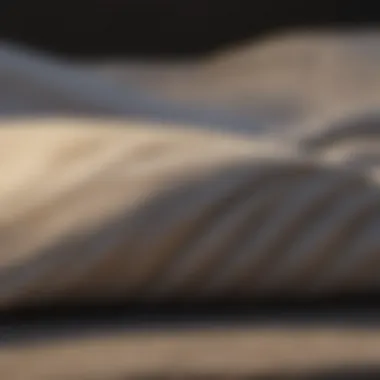

This awareness not only prolongs the life of your garments but also enhances your confidence in tackling stains, no matter the fabric type.
Post-Treatment Care
Post-treatment care is a crucial part of stain management that often gets overshadowed by pre-treatment and removal efforts. Many might think that once a stain is treated, the job is done. However, effective post-treatment care involves meticulous assessments and proper drying techniques to ensure that your fabric remains in good condition, without any lingering traces of stains.
A robust post-treatment strategy can significantly enhance the longevity of your garments. It not only safeguards the treatment you've applied but also helps in maintaining the fabric's original texture and appearance. With the right methods in place, you can prevent future stains from becoming entrenched in your clothing.
Evaluation of Staining
Assessing Effectiveness
Evaluating the effectiveness of your stain removal technique is vital in understanding whether additional steps are required. After treating a fabric, taking a closer look reveals how well the stain has been tackled. Factors such as color intensity and fabric texture play pivotal roles here.
- Key Characteristic: A thorough assessment will often highlight specific areas that need further attention, helping you determine the next course of action.
- Why it's Beneficial: By identifying the effectiveness of the removal process, you save time and resources, as you can target your efforts more precisely rather than blindly repeating the treatment.
- Unique Feature: A unique aspect of assessing effectiveness is the ability to notice both visible and invisible changes on the fabric. Sometimes, a fabric may appear stain-free but may still hold residue that could affect its longevity.
Next Steps if Stain Persists
If stains remain stubbornly visible after your attempts, knowing the next steps is essential. This involves not just repeating the stain treatment but also examining the fabric characteristics and how they interact with different solutions.
- Key Characteristic: A well-informed approach to next steps involves verifying the stain type. This can drastically influence the treatment method you choose.
- Why it's Popular: Identifying the paint or ink type, for example, can dictate whether you should use water or alcohol-based solutions for removal, ensuring effectiveness without fabric damage.
- Unique Feature: One advantage of the next step protocol is its adaptability. You can adjust your methods based on the evaluation results, enabling a more customized approach towards fabric care.
Proper Drying Techniques
The final process in post-treatment care is drying, which is critical yet often overlooked. The way you dry treated fabrics can either seal in your hard-won success or put them right back in the danger zone for stains to resurface.
When drying clothes, avoid high heat settings, as they can cause residues from stains to set permanently in the fabric. Instead, opt for air drying whenever possible, especially for delicate items.
"The way you treat your textiles at the drying stage can make or break your stain removal efforts."
- Considerations for Synthetics: Synthetic fabrics can retain heat longer; thus, it’s best to dry them in shaded areas rather than direct sunlight, as this helps prevent fading and uneven drying.
- Tumble Drying Tips: If using a dryer, a low heat setting is preferable, and removing items when slightly damp can prevent harmful wrinkle formations.
In summary, post-treatment care is not an ancillary task but a foundational step in preserving the integrity and look of your fabrics. By evaluating effectiveness and adhering to proper drying techniques, you set the stage for a long-lasting, beautiful wardrobe.
Long-term Fabric Maintenance
Maintaining fabrics over the long haul isn’t just about preventing stains; it’s about preserving the very integrity of the materials you hold dear. Whether it’s that cherished linen tablecloth or a favorite pair of jeans, understanding how to care for your fabrics plays a crucial role in their longevity. This segment delves into essential strategies that not only protect your garments from the harsh elements of wear and tear but also keeps them looking fresh and new through the years.
Storage Solutions
Proper storage of fabrics can significantly impact their lifespan. It’s not merely tossing items into a drawer or closet. The right environment can make all the difference. Here are some key considerations for fabric storage:
- Clean Before Storing: Always ensure that fabrics are clean before putting them away for extended periods. Stains can settle and become nearly impossible to remove later.
- Choose the Right Storage Container: Opt for breathable containers. For instance, cotton or linen bags allow air circulation, preventing mildew, unlike plastic bags that trap moisture.
- Avoid Folding for Heavy Items: When storing heavy garments, it might be better to hang them rather than fold. This prevents creases that can set in over time.
- Utilize Acid-Free Tissue Paper: For delicate items, like silk or embroidered pieces, layering with acid-free tissue paper helps maintain form and reduces chances of snagging.
Adhering to these practices will help keep your fabrics in great condition while stored, avoiding all kinds of unpleasant surprises when you decide to bring them back into use.
Routine Care Practices
Integrating routine care practices into your regular schedule can play a pivotal role in the long-term health of your fabrics. Unlike a one-time effort, maintaining a continuous approach ensures that your garments remain in tip-top shape over the years. Here are some effective practices to incorporate:
- Regular Cleaning Schedule: Establish a routine for washing your fabrics. For instance, curtains often collect dust and should be cleaned every three to six months. Similarly, rotate seasonal garments in and out of your wardrobe, ensuring you clean them before stored.
- Use Gentle Detergents: Harsh chemicals can hastily degrade fabric fibers. Opt for gentle, eco-friendly detergents that clean effectively without unnecessary wear.
- Proper Drying Techniques: Always dry fabrics away from direct sunlight to prevent fading. If possible, air-dry them, as heat from dryers can weaken fibers over time.
- Inspect for Damage: Regularly inspect your fabrics for signs of wear, such as loose threads or fading. Address these issues right away to prevent more extensive damage.
"Routine care is like a little love letter to your fabrics, ensuring they receive the attention they deserve."
Implementing these routine practices can ensure that your cherished fabrics remain stunning and serviceable for years to come. Investing a bit of time in this area pays off in spades as you continue to enjoy your textiles in pristine condition.
Final Thoughts on Stain Management
Understanding how to effectively manage stains is paramount for anyone looking to preserve the life and integrity of their fabrics. The importance of the topic resonates through every step of stain care—from identifying the stain type to applying the appropriate removal techniques. It’s not just about saving a garment; it's about investing time in maintaining your wardrobe. In an era where sustainability is critical, caring for your fabrics can contribute to reducing waste, keeping clothes in rotation longer instead of sending them to landfills.
Benefits of Effective Stain Management
- Prolongs Fabric Life: When treated promptly and correctly, stains are less likely to become permanent. This not only saves you money but also extends the lifecycle of clothing.
- Enhances Appearance: Well-maintained fabrics are more visually appealing, boosting your confidence and the overall impression you leave on others
- Reduces Hassles: Knowing how to deal with stains efficiently takes the guesswork out of laundry day. It makes the chore less daunting and more manageable.
It’s also essential to recognize that stain management doesn't end with the removal process. Post-treatment care and routine maintenance play vital roles in preserving fabrics. Being vigilant in your approach ensures that stains don't become a recurrent problem, creating a cycle of despair and frustration.
"An ounce of prevention is worth a pound of cure."
Adopting best practices ensures an effective defense against stains right from the start.
Recap of Best Practices
To fortify your stain management strategy, here are key takeaways:
- Act Quickly: As soon as a stain lands, handle it immediately. Blot, don’t rub, and always test any removal method on an inconspicuous area first.
- Use the Right Products: Different stains require different treatments. Know your stain’s nature and choose a suitable product accordingly.
- Follow Care Labels: Each fabric comes with care instructions for a reason. Respect them to avoid further complicating a situation.
- Stay Organized: Create a stain removal kit, including brushes, cloths, and specialized products, to ensure that you are always prepared.
- Document Experiences: Keep a record of stains and treatment methods. This can be beneficial for future reference, helping to refine your approach.
Encouragement for Ongoing Care
Even after mastering these techniques, the journey doesn't come to a halt. Ongoing care is critical in the overarching narrative of fabric management. Regularly assess your clothing and household linens. Regular inspections allow you to catch problems before they escalate into significant issues.
Implement a routine for your laundry tasks, not just for stain removal but for overall maintenance. Routine washes help prevent the buildup of dirt and grime, which can contribute to stains setting in. Remember, creating a habit of routine care can also make the process smoother and less intimidating.
Moreover, stay informed and adaptable. The world of fabric care evolves, and new products and techniques regularly emerge. Engage with communities, share experiences, and keep learning. Platforms like
Wikipedia and Reddit offer a wealth of information from fabric lovers and care enthusiasts.



